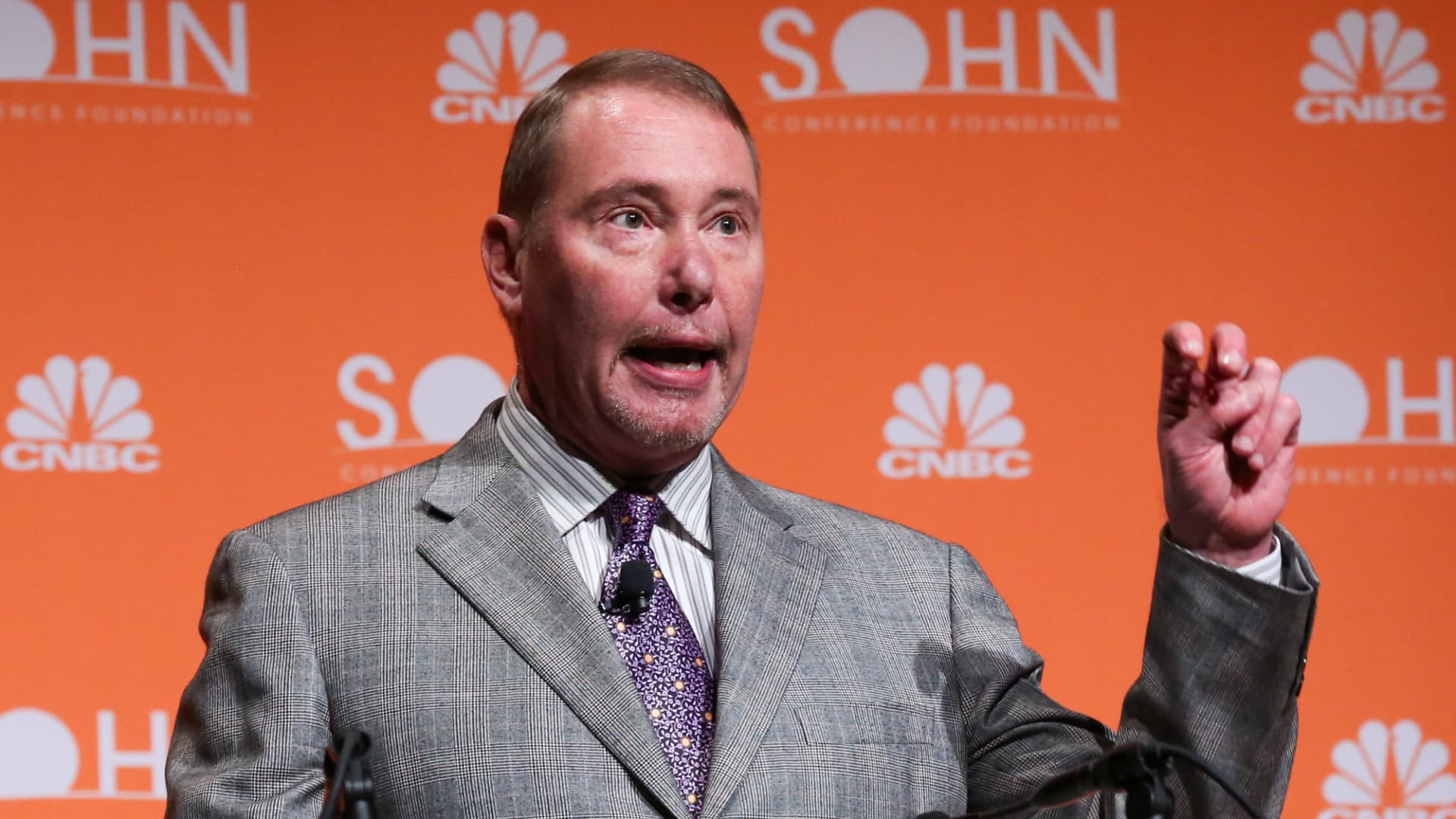The timing of cuts from the Federal Reserve is looking uncertain, but fixed income investor Jeffrey Gundlach has a way to play the theme: BB-rated bank loans. Central bank policymakers kept rates steady at the conclusion of their June meeting last week, maintaining the key interest rate at its range of 5.25% to 5.5%. But they also lowered their 2024 outlook on cuts to one reduction from three. “We’ve been for a while now operating under the investment theme of ‘higher for longer’ from the Fed,” Gundlach said last Wednesday on ” Closing Bell .” “Today, BB bank loans are very low risk, and they have a spread that’s about 290 basis points over [the Secured Overnight Financing Rate],” he added. “So, you’re talking about yields with an 8 handle. So even if the Fed cuts once, twice, you’re still talking about something that is very attractive, and the risk is very, very low.” Playing the bank loans space The actual bank loans themselves are made by lending institutions to companies. These loans aren’t accessible to individual investors who want to make a play for yield. Rather, large institutional investors snap them up and add them to their fixed income portfolios. The loans generally have credit ratings that are below investment grade, meaning that they are rated BB+ and below by Standard & Poor’s . Further, these loans are usually senior secured debt, meaning that they are backed by the borrower’s assets. In addition, senior secured debt is often first in line to get paid if the borrower goes bankrupt. The Fed’s rate policy presents another wrinkle for bank loans: These loans have a floating coupon rate component. In a rising rate environment, even as bond prices decline, these floating rates continue to offer attractive yields. Consider that the Fidelity Floating Rate High Income Fund (FFRHX) managed to post a decline of -0.31% in 2022 as the central bank embarked on its rate-hiking cycle, driving down bond prices. Bond yields have an inverse relationship to their prices. In 2024, FFRHX has a total return of about 3.6%. The fund has an expense ratio of 0.72% and a 30-day SEC yield of 8.18%. Once the Fed begins to reduce rates, however, investors in these instruments may see declines in income, according to Collin Martin, fixed income strategist at the Schwab Center for Financial Research. Accessibility through ETFs A fixed income sleeve should include exposure to high-quality bonds. Investors should also have some exposure to duration as a way to lock in today’s higher yields and offer some price appreciation once the Fed begins dialing back interest rates. Consider bank loans as a small part of a diversified fixed income portfolio — a complement to an investor’s asset allocation that can offer sweetened yields while rates remain high. Exchange-traded funds can give investors a way to play the bank loan space. Just be mindful of the credit risks of these bonds and keep an eye on fees, which can eat away at returns. The SPDR Blackstone Senior Loan ETF (SRLN) , for instance, has a 30-day SEC yield of 8.48% and an expense ratio of 0.7%. It has a total return of 3.12% in 2024. There is also the BlackRock Floating Rate Loan ETF (BRLN) , which has an expense ratio of 0.55%, a 2024 total return of 3.2% and a 30-day SEC yield of 8.23%.
This website uses cookies so that we can provide you with the best user experience possible. Cookie information is stored in your browser and performs functions such as recognising you when you return to our website and helping our team to understand which sections of the website you find most interesting and useful.





















Discussion about this post